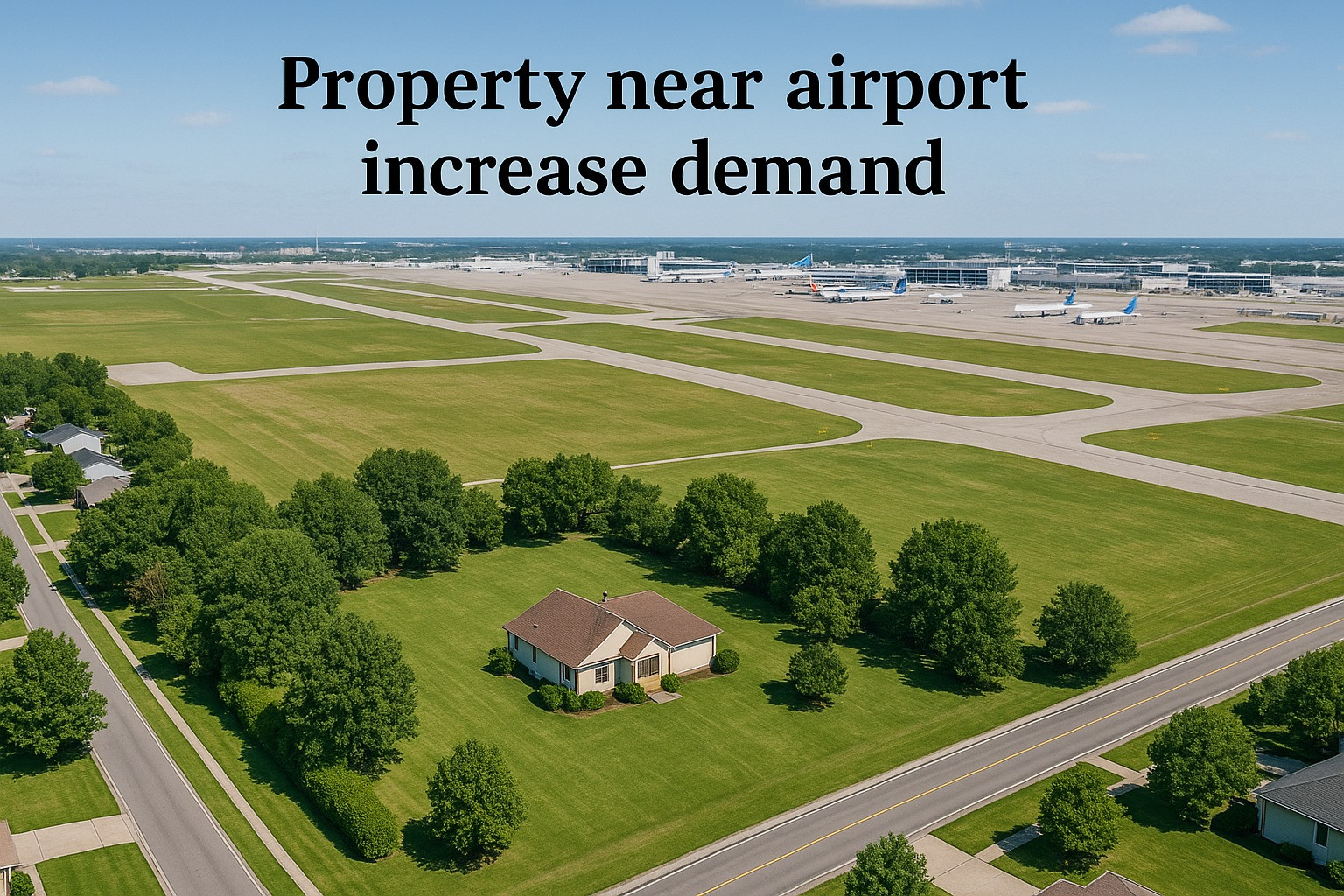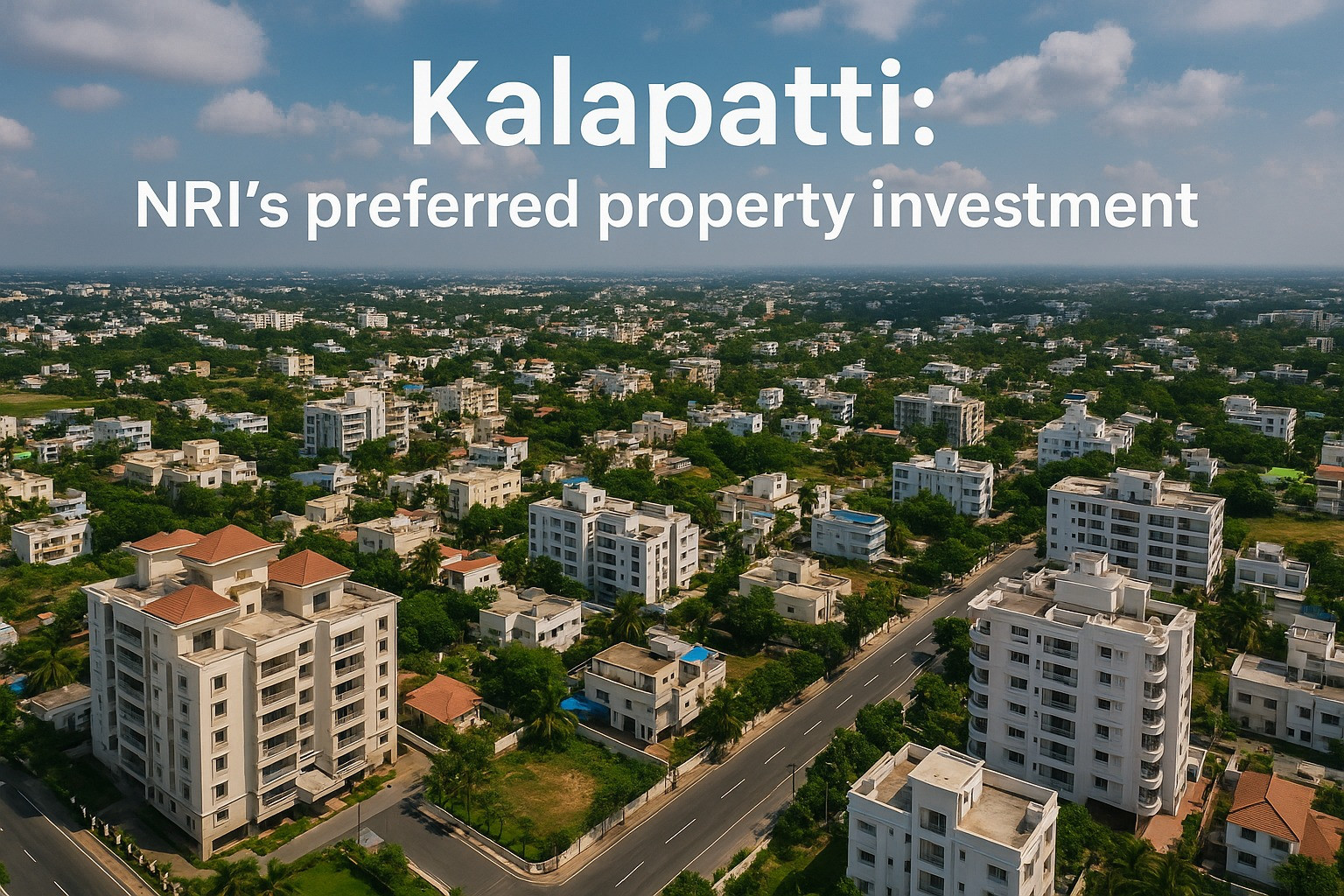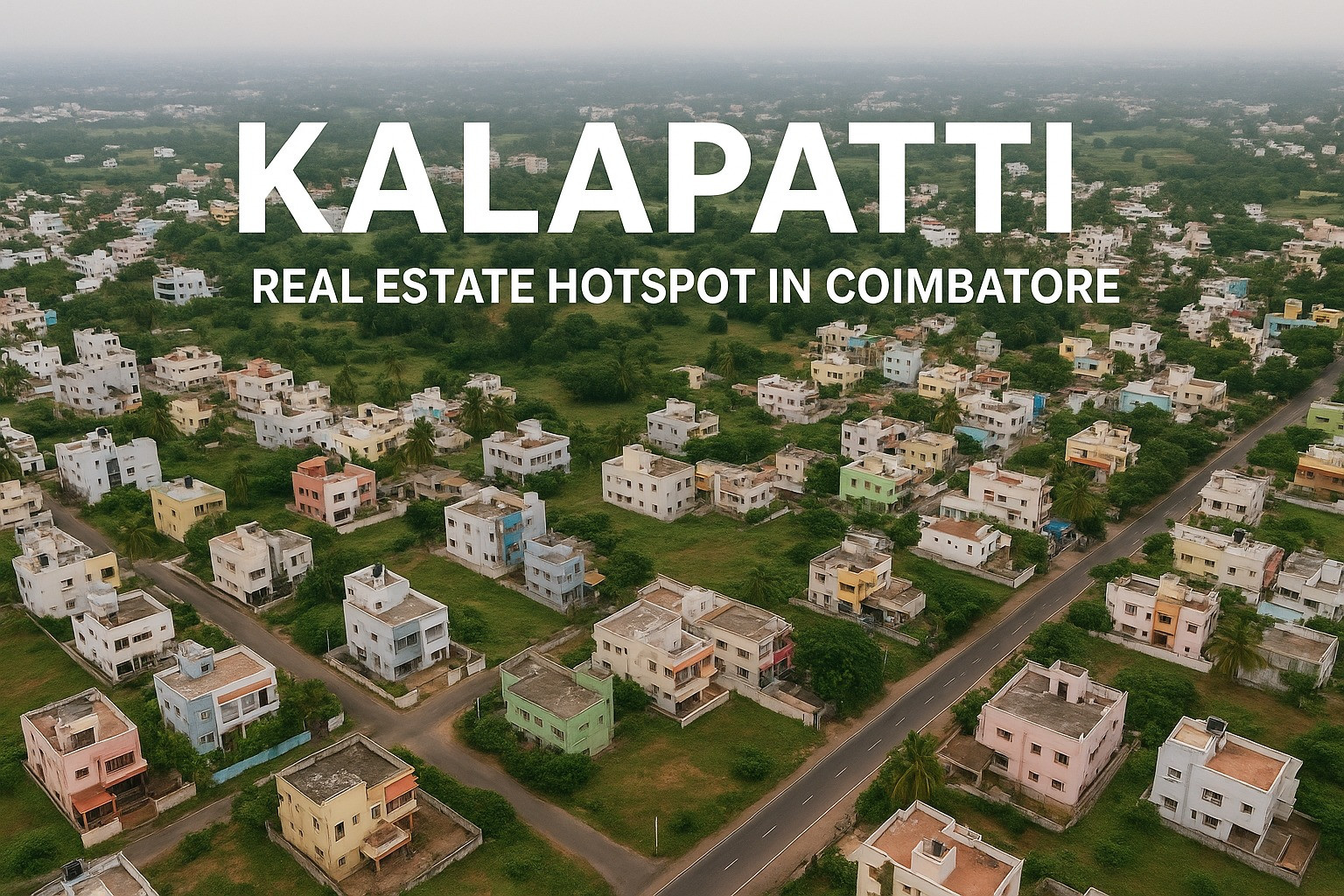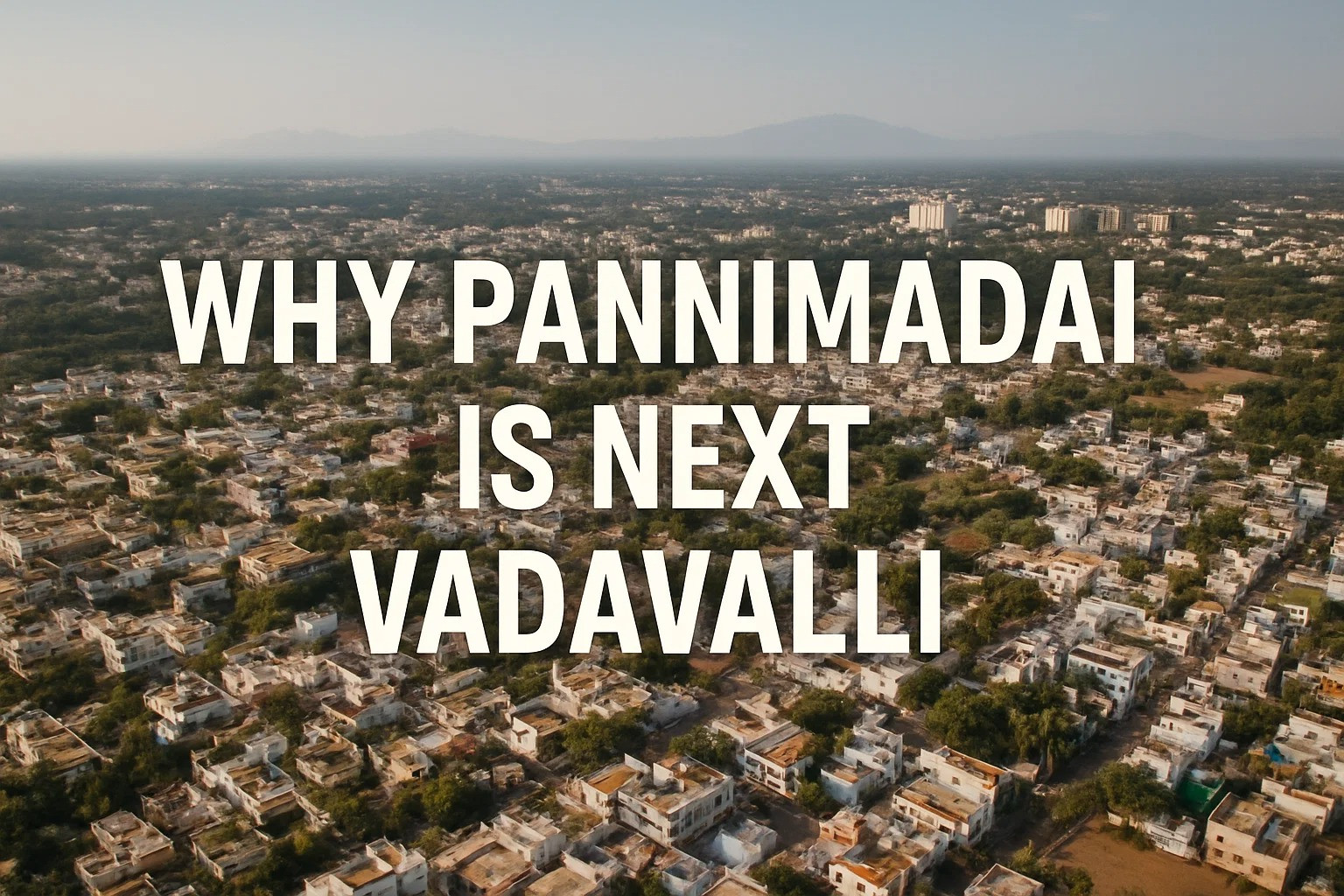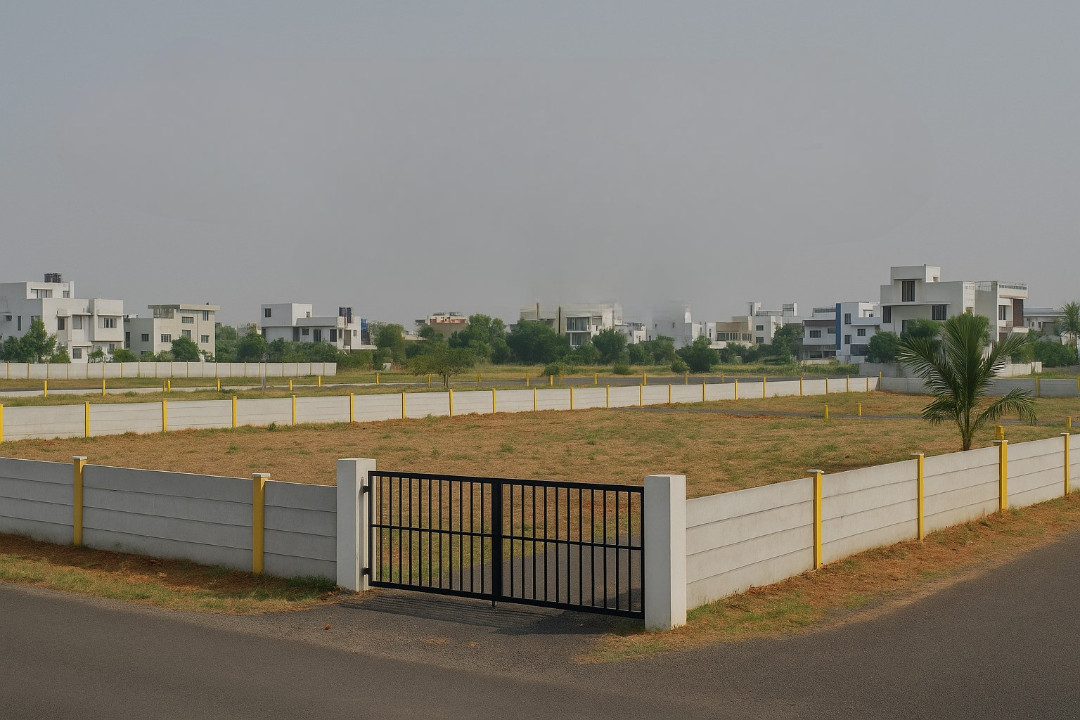
Coimbatore is fast evolving into one of South India’s most dynamic urban centres, and at the heart of this transformation lies a landmark infrastructure project — the Western Ring Road, also known as the Western Bypass. Designed to completely change the way traffic flows across the city, this project stands as one of the most impactful road developments planned for Coimbatore’s long-term growth.
Stretching across the city’s western belt, the Western Ring Road promises smoother connectivity, reduced congestion, and improved access for both commuters and commercial movement — especially benefiting the rapidly developing suburbs like Thudiyalur, Vadavalli, Perur, and Narasimhanaickenpalayam.
What Is the Western Ring Road? A 32.43 km Mobility Revolution
The Western Ring Road is a 32.43 km, four-lane bypass corridor strategically designed to divert heavy vehicles and non-destined traffic away from Coimbatore’s central roads.
By connecting two major highways — Salem–Cochin Road (SHU 52) at Mylkal and Nagapattinam–Gudalur–Mysore Road (NH 67) at Narasimhanaickenpalayam — this corridor creates a seamless movement loop around the city’s western side.
Core Purpose
- Reduce traffic pressure on key arterial roads
- Enable smoother logistics and cargo movement
- Improve inter-regional connectivity
- Minimize congestion inside commercial hotspots like Ukkadam, Gandhipuram, and Town Hall
- Support Coimbatore’s long-term urban expansion
The result is a future-ready road network that offers convenience, speed, and efficiency for residents and travellers alike.
Project Overview: A Strategic Route Through Coimbatore’s Western Belt
The Western Ring Road is carefully planned to pass through 15 revenue villages, connecting residential pockets, commercial zones, and industrial stretches.
Total Length
32.43 km, divided into three major phases.
Route Highlights
The corridor links:
- Mylkal
- Madukkarai
- Sundakkamuthur
- Perur Chettipalayam
- Theethipalayam
- Madampatti
- Perur
- West Chithirai Chavadi
- Vadavalli
- Somayampalayam
- Pannimadai
- Nanjundapuram
- Kurudampalayam
- Narasimhanaickenpalayam
This alignment ensures a smooth, uninterrupted journey across the western stretch of Coimbatore.
Phase 1: Connecting Madukkarai to Madampatti
Length: 11.8 km Route Passes Through: Madukkarai → Sundakkamuthur → Perur Chettipalayam → Theethipalayam → Madampatti
Key Features
- Four-lane main carriageway
- Bridge works and flyovers for continuous flow
- Designed to divert traffic coming from Pollachi, Kerala side, and southwestern regions
- Vital for decongesting Perur and Ukkadam routes
This stretch forms the foundation for the remaining phases, enabling an early link between the southern and central western belts.
Phase 2: Enhancing Connectivity Toward Vadavalli & Somayampalayam
Length: 12.10 km Route Passes Through: Madampatti → Perur → West Chithirai Chavadi → Kallikanaicken Palayam → Vadavalli → Somayampalayam
Key Features
- Strengthens the western arc of the corridor
- Offers better access to Vadavalli, a rapidly growing residential zone
- Provides alternate routes for commuters traveling toward Marudhamalai, Perur, and northern suburbs
This phase is expected to significantly improve the liveability and real estate growth across the western city.
Phase 3: Direct Northern Link Connecting Pannimadai to Narasimhanaickenpalayam
Length: 8.09 km Route Passes Through: Pannimadai → Nanjundapuram → Kurudampalayam → Narasimhanaickenpalayam
Key Features
- Strengthens access to northern Coimbatore
- Links the corridor to Thudiyalur, Pannimadai, and NG Palayam
- Improves connectivity to NH 67, leading toward Ooty, Mettupalayam, and Mysore
- Creates an effortless flow between northern, western, and southern routes
This phase plays a crucial role in unlocking the potential of suburbs like Thudiyalur.
Why the Western Ring Road Matters for Coimbatore’s Growth
The Western Ring Road is not just a bypass — it’s a long-term mobility solution that supports the city’s expanding economy.
Key Expected Benefits
- Reduced City Centre Congestion: Heavy trucks and long-route vehicles can bypass busy commercial roads.
- Enhanced Logistics Movement: Industries, warehouses, and transport hubs gain faster access around the city.
- Improved Commute Times: Residents in western and northern suburbs will enjoy smoother daily travel.
- Urban Expansion Support Encourages balanced development across Coimbatore’s outer regions.
How the Western Ring Road Elevates Thudiyalur’s Real Estate Potential
While the project benefits the entire city, the northern stretch — near Thudiyalur and Narasimhanaickenpalayam — holds tremendous potential.
1. Better Connectivity
Thudiyalur becomes a natural beneficiary as it gets high-speed access to:
- NH 67
- Vadavalli
- Perur
- Madukkarai
- Kalapatti & Saravanampatti via parallel roads
2. Growth of Residential Demand
With easier mobility and lesser congestion, more families and professionals seek homes in quieter suburban pockets like Thudiyalur.
3. Long-Term Appreciation
Infrastructure-driven zones typically witness faster land value appreciation. Thudiyalur’s proximity to Phase 3 aligns it for steady growth.
Conclusion: A Corridor That Will Reshape Coimbatore’s Future
The Western Ring Road stands as one of the most impactful infrastructure developments planned for Coimbatore. Its thoughtful alignment, phased construction, and long-term benefits make it a transformative mobility project for the entire city.
And as the western and northern belts evolve, Thudiyalur continues to emerge as a naturally advantageous residential and investment-friendly zone — supported by improved access, reduced congestion, and enhanced future connectivity through this mega corridor.







